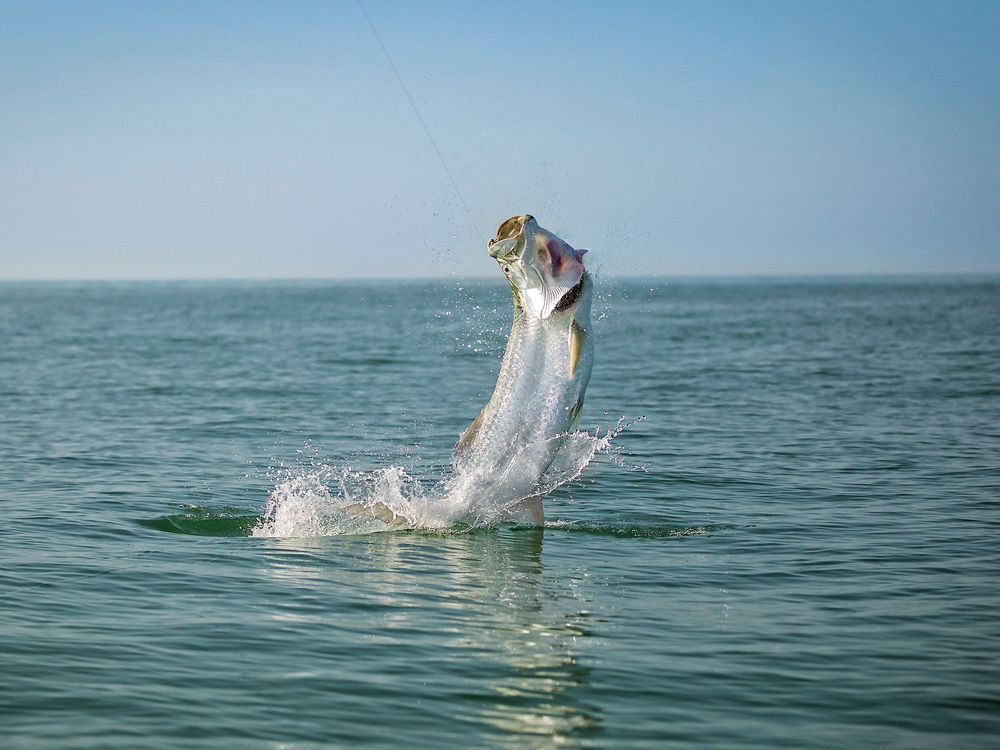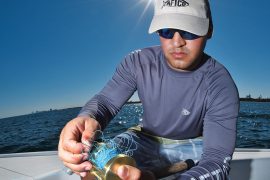
I started fishing for tarpon on Virginia’s Eastern Shore in the early ’80s with my dad and Barry Truitt, local director of the Nature Conservancy. Each summer, we spent a week in a cabin on the salt marsh, swatting flies, roasting in the sun, and horsing in big stingrays and sharks. We saw plenty of tarpon roll but never actually got one to bite.
Fast forward 30 years. After catching everything that swims in Virginia’s waters, I again turned my attention to the silver king. With the help of local guide Capt. Blake Hayden, I spent two summers exploring the marshes and mud flats looking for tarpon. And on a still summer day, no different than a million others I spent in the tidal marshes, we finally got our bite. The fish exploded on the flat line, launched itself into the air and greyhounded toward the oyster reef before we could get off the anchor. But the fishing gods smiled on us, and we eventually chased and released the tail-walking fish for our first tarpon catch.
In hopes of improving my odds, I tracked down local tarpon experts for advice. I started with Truitt, who caught his first tarpon in the early ’70s and, in 1975, set the Virginia state record with a 130-pound fish, which still stands. Over a biscuit and coffee at a local diner, he told me, “The first Virginia tarpon was caught in 1936 by an angler fishing for big red drum. Then in 1955, Virginia’s saltwater tournament director, Claude Rogers, successfully targeted tarpon on the Eastern Shore.”
After the history lesson, Truitt confirmed that tarpon season in the mid-Atlantic starts in late June and runs through the beginning of September. “The best is during the hottest days of August, and the Eastern Shore, covering 25 miles of marsh, and mud flats intersected by deep channels are prime tarpon grounds.” He added that he has spotted tarpon from Hog Island Bay south to Fisherman Island, and he fishes the inlets and deep holes on the ocean side of the islands. “Look for a large mud flat that drains into a deep channel,” Truitt said.

A Legend’s Advice
My next stop was local guide and legendary tarpon angler Capt. Jack Brady. At 83 years old, he has almost 50 years of tarpon fishing experience and still fishes hard for them all summer. Like Truitt, Brady assured me that the key to catching tarpon is time on the water and stressed the importance of finding fish that aren’t pressured. “Once someone sees me fishing a spot, there will be a dozen boats there by the next weekend.” That’s when he moves on. He spends the summer searching for virgin tarpon waters. “Drive around long enough and you’ll see the fish rolling,” he promised. “I found a spot last summer that put up a tarpon eight days straight.”
Recommended Setup
Once tarpon are located, Brady claims the fishing is simple. You just anchor up and soak chunks of cut bait or liveys on a fish-finder rig. He suggests using 30-pound tackle and spooling the reel with 20-pound monofilament. Add 20 feet of 50-pound-test, slide a fish-finder…





